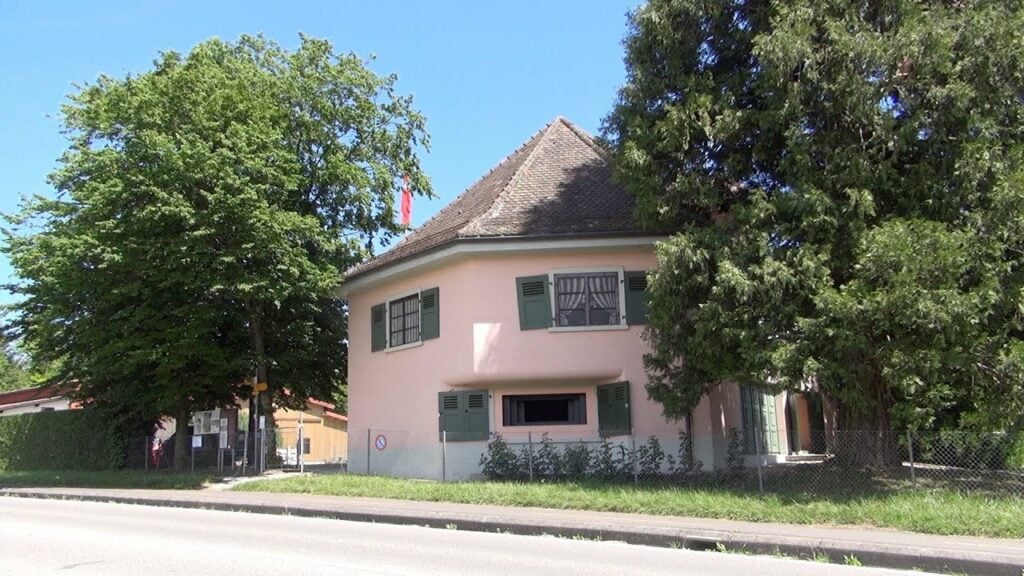The Villa Rose is one of the twelve fortresses that were built to defend Switzerland from invasion during the Second World War. But did you know what was so special about the Villa Rose?
The Villa Rose looks like an innocent, pink, two-story family home in the Swiss countryside. However, it is a military complex with massive weaponry and was created as part of the so-called “Toblerone Line” to protect Switzerland from invasion.
The Pink Fort in Switzerland
The Villa Rose, located on the Toblerone defensive line in Switzerland, a long trail of anti-tank defenses consisting of 12 fortresses linked by miles of cement wedges known as dragon’s teeth, is one of the fortresses built to defend the country from invasion during World War II. You might not realize it from the outside, as it appears to be a tacky pink suburban home.
This hidden stronghold was built in 1940 as part of the more extensive defensive line incorporating miles of cement dragon’s teeth, running near the Villa Rose. The fortification looks like a harmless two-story home, but the false house held massive guns instead of a nuclear family lounging inside. The large green garage door could open to reveal two massive cannons assisted by a third hidden behind the shutters of a ground-floor window.
The structure was constructed of sturdy cement walls painted pink to make the fort appear even more innocuous. In the second story, there are even phony windows that are merely painted on the concrete.
Along the Toblerone Line, the Villa Rose had a twin stronghold known as the Villa Vert, a similarly camouflaged battlement painted green. Both homes were instances of false chalets constructed throughout Switzerland during World War II. Villa Rose, now a museum, is the best-preserved example of these covert forts. (Source: Atlas Obscura)
What is the Toblerone Line?
The long line of cement defensive wedges is called after the iconic chocolate bar. During World War II, Switzerland was in a challenging position, surrounded by fascist strongholds such as Germany and Italy. To prepare for an invasion, the government established the Promenthouse Line, which is still in use today under the much sweeter moniker of the Toblerone Line.
The Promenthouse Line, which ran from the Jura highlands to Lake Geneva and comprised 12 strongholds connected by kilometers of cement wedges known as dragon’s teeth, was more of an annoyance than a wall. Tanks could not penetrate through the 16-ton concrete blocks, but explosive ordnance could readily demolish them. Fortunately, the fortifications were never tested, and the path of stone fangs can still be seen today.
While there have been motions to dismantle the defensive line, it still survives today, albeit by a different name. Thanks to the defense’s resemblance to the distinctive Swiss chocolate bar, Toblerone, the increasingly moss-covered dragon’s teeth have taken the company’s reputation for their own.
Along some sections of the railway, a Toblerone trail has been developed, featuring trails and staircases for walkers and cyclists. Some of the strongholds along the path can also be visited. (Source: Atlas Obscura)
